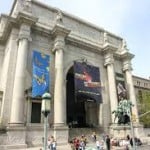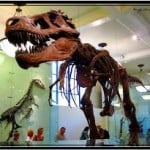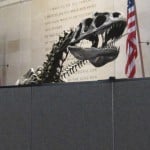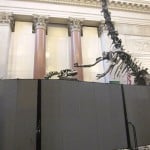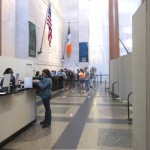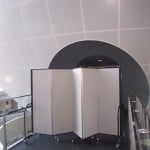Screenflex vs. T-Rex
Screenflex vs. T-Rex at the Natural History Museum
T-Rex is no match for Screenflex Room Dividers! Well, not for a fossilized one anyhow. We ran into these dividers at the American Museum of Natural History in New York recently. The museum uses Screenflex dividers around displays that are closed for refurbishing and for crowd control. We also saw units at the Statue of Liberty on the same trip. Being an American company, it gives us great pride to see our products at U.S. institutions.
There’s a reason the museum is a top field trip destination in New York City: amazing new exhibits, over 32 million objects in their permanent collections, and exceptional programs, resources, and classes for students and teachers!
Located in park-like grounds across the street from Central Park, the museum complex has 27 connected buildings housing 45 permanent exhibition halls, as well as a planetarium and a library. The museum occupies 1,600,000 square feet. The museum was founded in 1869. Prior to the construction of the present complex, the museum was housed in the Arsenal building in Central Park.
The architect Kevin Roche and his firm have been responsible for the master planning of the museum since the 1990s. Various renovations both interior and exterior have been carried out including improvements to Dinosaur Hall and mural restoration in Roosevelt Memorial Hall.
Most of the museum’s collections of mammalian and dinosaur fossils remain hidden from public view. They are kept in storage areas located within the museum complex. The most significant storage facility is the ten-story Childs Frick Building which stands within an inner courtyard of the museum.
